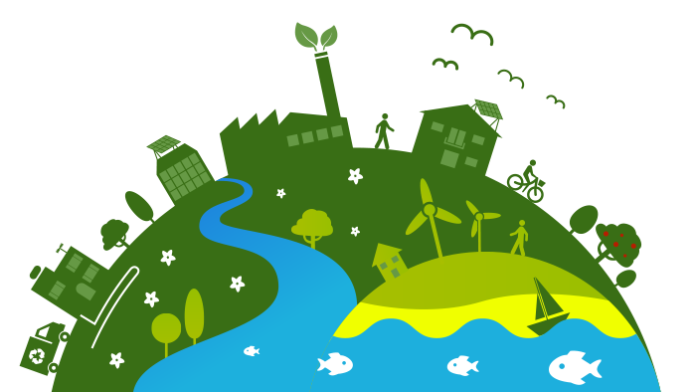The green economy is the major way forward around the globe, but was Pakistan able to capitalize on opportunities provided by the pandemic for leaping toward a green economy.
With the pandemic of COVID-19, the strategic notion of excessive dependency on non-renewable energy resources went more assertive by nature redefining the scope of human intervention in natural cycles. This in turn made 2020, a year of ignition of green economic development in countries with developing industrial resources. Globe has experienced some sudden but eco-friendly changes in major supply chains, health sector priorities, and industrial advancements.
Pakistan, a country that had to go to IMF for a bailout package in May 2019, before the pandemic, was subjected to tighter financial policies as one of the conditions of the loan. But inflation came as a pre-requisite of such tightened policies, as the country was still suffering from double-digit inflation at the end of FY 2018-19. But the focus was never on the green development of industries and leaping toward sustainable development as the situation was a desperate one. Most of the recently established power plants were coal-based in 2019, with the share amounting to a whooping 2600 MWh. The government, at that time, had launched policies for climate prevention like Billion Tree Tsunami, but the desperate situation of economic was the biggest barring factor for focusing on sustainable industrial development.
In 2020, along with the whole globe, Pakistan also faced a deadly pandemic. While the pandemic was dreadful in many aspects but it gave the world an opportunity to rethink policies for sustainable development and got a natural reboot to curb the hazardous effect of industrialization on nature. Pakistan got an opportunity to revise the development strategies as the economy was quite stagnant during the pandemic and the burden on industries was significantly lower. It was the perfect time for Pakistan to push toward green economic development. Pakistan’s water-energy-food nexus wasn’t in equilibrium as services were responsible for almost over 60% of the economy. But the question is whether Pakistan was successful in redeeming the pandemic as an opportunity or whether the situation was worsened?

Pakistan pursued a climate-focused policy during the pandemic launched Ecosystem Restoration Fund and increased support for the Billion Trees Tsunami project. The plan was suggested the establishment of 15 national parks with increased coverage of protected areas to increase at almost 50%. This was also to create green jobs for youth at the rate of 5000 jobs per park. Apart from this, a swap scheme “Debt for Nature” was designed to ride on this directional shift from Pakistan towards a green economy for debt retirement. As Pakistan is now considered one of those countries that are objective to green development, the effort can bring huge relief for Pakistan as the targeted debt for relief is nearly $1 billion. It is important to note that if Pakistan is successful in striking this type of deal, it will not repay the debts, but will instead make progress on the restoration of the natural environment, whether it is biodiversity conservation or restoration, or green jobs.
In the last three years, Pakistan has demonstrated performance through the Billion Tree Tsunami, Clean Green Pakistan, a plastic bag ban, recharge Pakistan, ecosystem restoration, and the establishment of twenty-three national parks as of 2021. During the pandemic, the country made a bold announcement to transition away from a coal-based energy path and toward renewable energy, announcing a target of 60 percent clean energy mix by 2030. The bond’s issuance drew the attention of a number of international investors, who offered Wapda investments totaling $3 billion. By this initiative, nearly 2600 MWh of coal-based electricity will be shelved by 3700 MWh of hydroelectric energy.
But the impact can’t be translated back into the economy as during FY 2021-22 JULY-FEB is recorded at $12.1 billion. The major of this can be credited to the acquisition of COVID vaccines and other health sector purchases but in the long run, the initiatives for green development are under substantial pressure due to economic pressure. The Current Account Deficit (CAD) is currently offset by Foreign Remittances by Overseas Pakistanis, as the CAD in Feb 2022 was around $2.03 Billion while remittances were $2.2 billion rather than production profits from the industries. Such growth will not be sustainable as the country will again be on makeshift measures rather than planned sustainable growth.
We can still credit Pakistan for all of its inclination toward green development but such an effort is barred by many limitations that will have an impact till the time we will focus on long-term sustainability goals. The impact of green policies was overpowered by the traditional means of industrialization and a lack of consensus among the public for green economic development. Albeit greater ambitions, rising Inflation, increasing CAD, lower agricultural yields and lesser industrial production are the factors that contributed to Pakistan not cashing on the opportunity to leap toward an eco-friendly development policy.




